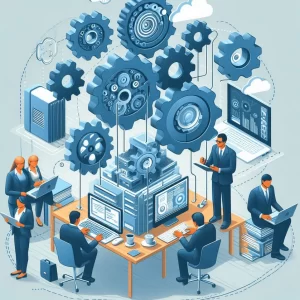What Is a "Blood in the Streets" Moment?
The quote “buy when there is blood in the streets” was coined by Baron Rothschild from the 18th century after the panic that ensued after the Battle of Waterloo against Napoleon. At that time, there was literally blood in the streets in the aftermath of a war. In present time, this expression can be interpreted as “buy when there is the most pessimism”. Why is this important? This moment is when prices are at their absolute lowest. Risk is at its lowest and reward is at its highest, since prices will likely move up the farthest from the lowest point.
What are the signs when there is blood in the streets with respect to investing?
People do not want to look at their bank statements or positions. Due to losses in the markets, people become disgusted and go into a sense of denial. This translates into not wanting to see what is going on their accounts for fear of being reminded of the pain of their losses.
Markets are hated. People do not want to talk about investing at parties, on social media or to their business contacts. Investing becomes icky and a source of shame.
Everything is being sold – even the best quality securities to pay off margin calls. If you follow statistics of the markets, during market corrections, the correlation converges to 1. This means that all of the markets go down at the same rate while the panic is on. Why? All of the securities are being sold at once to pay off margin calls, or pay for money borrowed for investing. Other terminology you will hear is that people are unwinding their leverage (deleveraging) or paying off their debt incurred to invest. The usage of debt is related to the severity of these market corrections.
The price of a needed product is forecast to be zero. This happened with the price of a barrel of oil in April of 2020. Oil is a product that people need for everyday consumption, and it is requires work and resources to take it from the ground. A price of zero is not realistic and it is bound to rebound. The price of bitcoin is also forecasted to be zero but this is not an everyday commodity (yet), so it is harder to use this argument in this case.
Everyone is telling you not to buy and news is extremely negative. The media is known to exaggerate issues and cause negative emotions like fear, rage and hopelessness. In a blood in the streets moment, this is compounded by financial talk shows, newsletters, and the everyday investor thinking there is gloom around the corner.
There is typically a moment of dread and hopelessness when panic gives way to a moment of despair. This happened in 2008 when shipping was suspended. It also happened in 2020 when GDP was forecasted to contract by 30% and oil was trading at negative $37 per barrel on the futures market in April of 2020. I could add the “break the buck” moment of 2008 when money market funds were threatening not to honour withdrawals of their products, or a bailout announcement of Lehman Brothers in September of 2008.
There are some notes of caution here. A market crashing by 30% or more is not necessarily a great buying opportunity. The technology market crashed in 2000 and did not recover for many years. When the market did recover, there were different companies that were leading the technology sector compared to that time. You could have purchased the Nasdaq index and participated in the recovery. Japan also crashed in 1991 and did not recover to this day. The key is to identify which markets are companies that are needed and will return due to this need versus markets that are frothy and are not due to recover. There is no hard and fast rule to address this difference but some key factors are: If it is a general market like the S&P 500, if it is sector or product that always some main street demand, or if the valuations are really low after the crash and will continue to be low for the foreseeable future, then this market is likely to recover.
Buying a blood in the streets moment is emotionally difficult. You are going against your family, your friends, your broker, the news and the sources of information. If you want comfort, this is not for you. If you want to achieve a huge reward in your investments, this strategy is worth considering.








